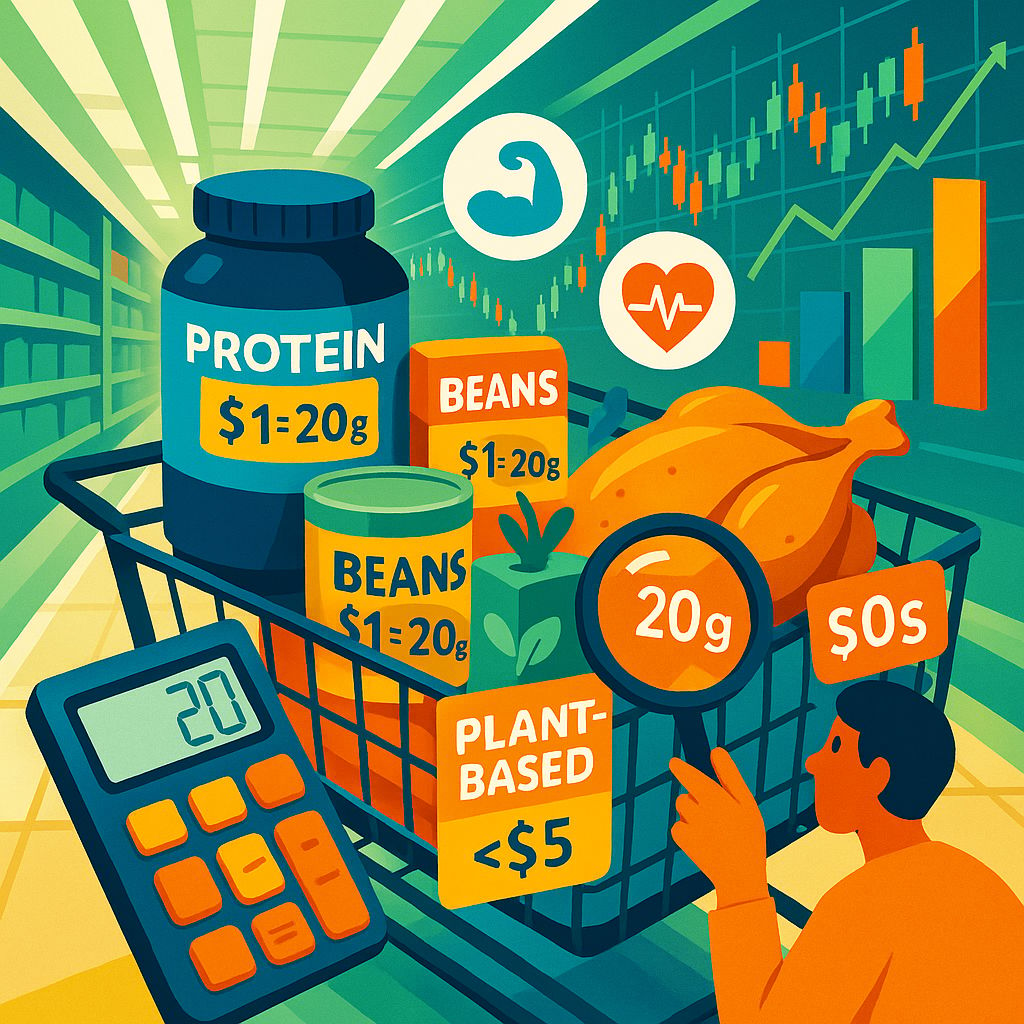- Culture Shock
- Posts
- Nutrition-Per-Dollar: decoding the ROI mindset taking over your grocery cart
Nutrition-Per-Dollar: decoding the ROI mindset taking over your grocery cart

Inflation is no longer background noise. It is the metronome guiding every shopping decision. Folks are standing in the cereal aisle running mental spreadsheets, asking a single ruthless question: how much nutrition am I getting for this hard-earned dollar? Conversations that mash price with health, think “cheap healthy meals”, now outpace pure price talk by 67%. Even taste is losing ground. The hottest content cluster is literally called Healthy Eating Mindset, and its members judge dinner by cost-per-protein-gram rather than flavor fireworks.
Welcome to the Nutrition-Per-Dollar era. Grab your calculator. Using Nichefire,
1. The Protein-Value Crunch
Protein is today’s blue-chip asset. Online chatter about protein jumped 42% quarter-over-quarter, and posts that tie protein to price earn twice the engagement of recipe content. Meanwhile, average shelf price for a 20-gram hit climbed 11% year-over-year, almost double overall grocery inflation.
Consumers are not waiting for brands to do the math. Roughly 2% of all protein posts include do-it-yourself calculations like “$1 for 20 g”. Hand them an on-pack badge that reads “$1 = 20 g” and watch intent spike.
2. Plant-Powered on a Budget
Vegetarian eating used to be a premium flex; now it is bargain culture. Mentions of “plant-based + cheap” ballooned 58%. 72% of positive buzz clusters around plant SKUs priced below five dollars. Family budgets drive the narrative, with 61% of posts referencing kids or entire households.
Translation: if your veggie item costs $6.49, you are automatically filtered out of thousands of TikTok grocery hauls. Give shoppers a “Plant Powered Under Five Bucks” toggle so they can find you before they find a private label.
3. Food-as-Medicine for Seniors
Boomers have read every nutrition headline and now want medical benefits baked into affordable meals. Senior-oriented discussions already command 19% of volume, and growth is projected to explode 134% in the next year and a half. Joint support, heart health, portion control, plus SNAP eligibility, will separate winners from Medicare-priced losers.
4. Micro signals hiding in plain sight
#StretchABird. 39 posts crown rotisserie chicken the MVP of budget protein. KPI: a minimum of three meals per bird equals “good value”. Bundle recipes on-pack so shoppers see the stretch without opening Excel.
Pantry Power-Ups. Beans show up in two-hundred-twenty-eight posts as fiber-plus-protein unicorns, while chickpeas earn heart-health street cred in over a third of legume chatter.
Gen-Z Breakfast Shakes. 128 mentions reveal that a blender can replace the coffee run. Cheap energy, zero gas station donuts.
Mindful Late-Night Snacking. 323 posts rave about frozen grapes, carrot fries, and air-popped popcorn, the holy trinity of big volume, low calories, zero guilt.
These signals look small today; they can become tomorrow’s category cannibals if you ignore them.
5. The Activation Playbook (Making the math work for you)
Badge the Math. A simple “$1-per-20g protein” icon lifted purchase intent 21% in concept tests. Put it front-and-center on packaging and digital thumbnails.
Signpost the Savings. “Plant-Powered < $5” shelf scripts boosted e-commerce click-through 15%. Physical stores can borrow the line with a neon shelf talker.
Gamify the Grocery List. User-generated “7 dinners for $25” challenges generate four times more engagement than brand-only content. Provide downloadable templates or co-host a TikTok duet series that tallies up receipts.
Publish the Benchmark. Consumers side-eye price leaders on health claims, 44% of sentiment is still mixed. Make your cost-per-nutrition benchmarks public and you will own the conversation before a challenger does.
6. What this means for your next planning meeting
Stop pitching “new and improved taste” and start pitching ROI. The modern eater is a portfolio manager balancing protein yield, micronutrient exposure, and budget risk. Give them transparent metrics, family-friendly price tiers, and medical credibility, and they will reward you with loyalty that survives the next grocery-price headline.